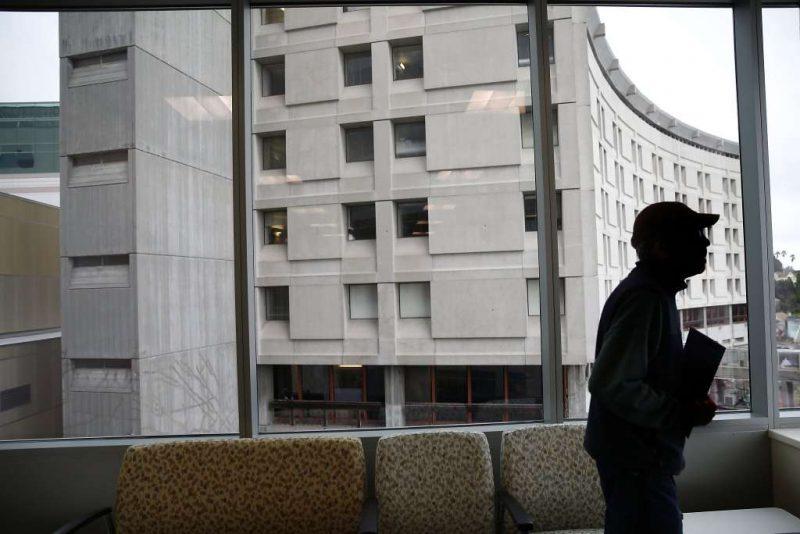Highland Hospital’s new nine-story tower, the centerpiece of the largest public construction project ever funded by Alameda County, is set to open to the public in April.
The new Oakland hospital will replace a 1960s-era building that didn’t meet newer earthquake safety laws, lacked the latest technological equipment associated with modern centers and placed as many as four patients in a single room.
Alameda Health System’s new 169-bed hospital will have nearly enough rooms for all patients to recover in private rooms and has advanced imaging and other technology. The hospital was funded with $688 million in taxpayer funds, and came in on time and on budget.
“The investment we made here signifies the county’s commitment to make sure first-rate health care is available to all our residents, regardless of standing or ability to pay,” said Scott Haggerty, president of the Alameda County Board of Supervisors, at a ceremony Friday celebrating the completion of the new tower.
“While we haven’t found a way to spend $1 billion on a new sports stadium, we have found a way to spend $668 million on a health facility,” he said, taking a dig at the ongoing controversy over building a new football stadium for the Oakland Raiders.
Driven by a state law requiring hospitals to meet earthquake safety standards, the county started developing its plans to rebuild and modernize the busy trauma care and safety-net hospital more than a decade ago. Oakland is home to a number of new hospitals, including Alta Bates Summit Medical Center’s 238-bed Merritt Pavilion and Kaiser’s 349-bed flagship hospital. Both opened in 2014.
The first phase of Highland’s three-part project was completed in 2013, with the opening of the Highland Care Pavilion, which houses outpatient primary- and specialty-care clinics, a modern cafeteria and underground parking. Highland’s emergency department, which is visited by more than 80,000 patients a year, was reconstructed in 2005 and meets the new seismic standards.
Friday’s celebration heralded what’s called the Acute Care Tower, which will have all the inpatient services, including intensive care, medical-surgical care, maternity, laboratory, imaging and physical therapy. The final and third phase of the project, expected to be completed by next year, involves tearing down the old hospital, which opened in 1968, and constructing the new hospital’s entrance along with a courtyard.
The new hospital isn’t much larger, at about 250,000 square feet, than the old building, which is 235,000 square feet and has the same number of floors as the new one. The number of beds drops from 206 in the old hospital to 169 in the new. But officials say that admitting patients isn’t necessarily a sign of good care and that the new hospital reflects the dynamics of modern health care.
Improved outpatient care keeps more patients from having to be admitted, so the ones in the hospital tend to be sicker and really need to be there. The single-room beds, even in the neonatal intensive care unit, will allow for better infection control and provide space for families to spend time with their loved ones. The floors are made with materials designed to reduce noise, the walls are painted in soothing colors, and the units have larger rooms and work stations.
“The hardest thing for the nurses to get used to is all this space,” said Lori Foidl, nurse manager in the intensive care unit. “They want more space, but it will just take a little time to get used to.”
Some of the hospital staff started to train in the new hospital in late November.
On April 4, patients will be moved from the old hospital to the new. The transfer will be less tricky than with many other hospitals because patients won’t have to leave the hospital. “We’re literally pushing them from one tower to another across a bridge,” said Adrian Smith, a nurse director who is in charge of the transition.
Edited on June 13, 2018.

